|
The short film “Fatima’s Drawings” was made by photographer Magnus Wennmann. It portrays the journey of Fatima, a Syrian refugee, using her own drawings to offer a glimpse of life in Idlib, Syria, the civil war which made her family depart, and their harrowing journey from Syria to Europe, before arriving at a new home in Norberg, Sweden. The film has won multiple honors at leading festivals, including the First Prize of the World Press Photo multimedia category, and best digital news story for France’s Visa pour l’Image Photojournalism Festival.
Fatima’s photo portrait by Magnus Wennman (part of his photographic essay “Where the Children Sleep”) is currently on display at Charlottesville High School, and will be exhibited at the Jefferson School African American Heritage Center starting December 7th. FATIMA’S DRAWINGS from Magnus Wennman on Vimeo. "I used to cry every day. My husband and I felt lost. We sold everything we owned in Argentina to come to America. We had to start everything again. We used to work for 18 hours [a day,] seven days a week."
In the 2011 article titled "I Used to Cry Everyday: A Model of the Family Process of Managing Displacement" by Danielle Greene, Parisa Tehranifar, Lourdes J. Hernandez-Cordero, and Mindy Thompson Fullilove, the authors interviewed 20 families who have experienced displacement for a multiplicity of reasons, many relocating to the United States from overseas, and many having to relocate within the United States itself. In the introduction to the paper, published by the Journal of Urban Health, the authors write of the consequences of displacement: "Individuals who are forced out of their community are psychologically injured and experience various kinds of personal and collective losses. These massive intra- and interpersonal losses set off complex processes that may not only give rise to new diseases, but also affect how old and new diseases are propagated. An ecological study by Wallace provides an illustrative example. In the 1970s, the destruction of low-income housing in poverty-stricken areas of the South Bronx in New York City led to a massive movement of residents into adjacent neighborhoods, which was followed by a sudden increase in the number and type of diseases in those areas. Major public health problems included crack addiction, crime, HIV infection, and tuberculosis, which spread rapidly throughout the overcrowded receiving communities (i.e., the communities in which the displaced families settled), the larger city, and the region." For the full text of the paper, please click here. On Losing a House
1. The bumble bees know where their home is. They have memorized every stalk and leaf of the field. They fall from the air at exactly the right place, they crawl under the soft grasses, they enter the darkness humming. 2. Where we will go with our tables and chairs, our bed, our nine thousand books, our TV, PC, VCR, our cat who is sixteen years old? Where will we put down our dishes and our blue carpets, where will we put up our rose-colored, rice-paper shades? 3. We never saw such a beautiful house, though it dipped toward the sea, though it shook and creaked, though it said to the rain: come in! and had a ghost -- at night she rattled the teacups with her narrow hands, then left the cupboard open -- ad once she slipped -- or maybe it wasn't a slip -- and called to our cat, who ran to the empty room. We only smiled. Unwise! Unwise! 4. O, what is money? O, never in our lives have we thought about money. O, we have only a little money. O, now in our sleep we dream of finding money. But someone else already has money. Money, money, money. Someone else can sign the papers, can turn the key. O dark, O heavy, O mossy money. 5. Amazing how the rich don't even hesitate -- up go the sloping rooflines, out goes the garden, down goes the crooked, green tree, out goes the old sink, and the little windows, and there you have it -- a house like any other -- and there goes the ghost, and then another, they glide over the water, away, waving and waving their fog-colored hands. 6. Don't tell us how to love, don't tell us how to grieve, or what to grieve for, or how loss shouldn't sit down like a gray bundle of dust in the deepest pockets of our energy, don't laugh at our belief that money isn't everything, don't tell us how to behave in anger, in longing, in loss, in home- sickness, don't tell us, dear friends. 7. Goodbye, house. Goodbye, sweet and beautiful house, we shouted, and it shouted back, goodbye to you, and lifted itself down from the town, and set off like a packet of clouds across the harbor's blue ring, the tossing bell, the sandy point -- and turned lightly, wordlessly, into the keep of the wind where it floats still -- where it plunges and rises still on the black and dreamy sea. (Mary Oliver, from What Do We Know, 2002 Da Capo Press) Farah, who fled Syria, loves soccer. Her dad tries to make soccer balls for her using anything he can find, but they don’t last long. Every night, he puts Farah and her big sister Tisam, 9, to bed hoping that tomorrow will bring them a proper soccer ball to play with. All other dreams seem to be beyond his reach, but he is not giving up on this one. © Magnus Wennman From November through February, the World Press Photo Award Winning photo documentary "Where the Children Sleep" by acclaimed Swedish photographer, Magnus Wennman, will be exhibited throughout Charlottesville in local houses of worship, civic institutions and at the University of Virginia.
In its first phase, from Nov. 1 to December 5, images from the exhibition will be hosted across our community at multiple sites. In the second phase, all the individual images will be brought together in a united exhibition at the Jefferson School African American Heritage Center (233 4th St NW, Charlottesville, VA 22903), where it will be on display from December 7th through January 18th with artwork and writings of Charlottesville High School students inspired by the stories of their classmates who have experienced displacement. For more details, please visit the initiative's website: www.w-here2stay.org Omar Vidal, the Director General of the World Wildlife Fund in Mexico published an essay in El Universal on November 21, titled "Migrate, or Die Trying." It begins with the poem by Antonio Machado:
"Traveler, your footprints are the only road, nothing else. Traveler, there is no road; you make your own path as you walk. As you walk, you make your own road, and when you look back you see the path you will never travel again. Traveler, there is no road; only a ship's wake on the sea." "Many kinds of migrations and migratory pathways exist. They are as ancient as life on Earth. Most are massive, round-trip seasonal journeys by land, water or air. Others are movements of countless individuals in a single direction at intervals of a few years, sometimes referred to as emigrations and "invasions." Whatever the case, animal migrations transcend the political borders shaped by a dominant species, Homo sapiens, which mostly reflect the consequences of past wars and current struggles...." For the full essay, please see El Universal's website here. Lebanese artist, Yazan Halwani, was invited by the German arts organization, Alte Feuerwache to Mannheim where he painted a series of murals exploring Lebanese and Arab identity. The mural below tries to capture "moment in front of your luggage when you decide on what you will leave behind because you cannot take everything." Halwani writes, "I think a real portrayal of identity should contain starker imagery: the chaos associated with the necessity to immigrate or the difficulty of seeing others do that.
That moment where you, your sibling or your friend realise the need to move from home and become an expat because the economy and the political deadlock erase the prospects of a present there." To read his full reflections on this Mannheim mural, please visit his Facebook page here. With thanks to our associate, Charlotte Kaeppel, for introducing us to Halwani's work. The museum of the Jamestown Settlement has an instructive display (photo below) from which one can see the rapid displacement of Powhatan Indian communities in the 17th century as English settlements grew. An article on Wednesday, November 21st, in the Washington Post cites new research challenging the prior understanding of the extent of Powhatan Indian towns in this same time period, and suggests that the Rappahannock tribe dominated the sites along the river of its name (the third river from the bottom in each map).
"Recent archaeological work, driven by 2018 data analytics, has unearthed evidence of the Rappahannock Tribe’s vast range along the river that bears its name. The findings suggest the Rappahannocks were a powerful tribe with equal standing to others that got more attention from European settlers. The emerging story undercuts what Western historians have asserted for 400 years about the shape of native culture when the Europeans arrived in America, and it restores the place of the Rappahannocks, who had nearly been erased from the record." For a link to the article, please click here.
Day 22 - The "Haudenosaunee Thanksgiving Address," and a plug for "The Great Thanksgiving Listen"
On this Thanksgiving Day in the United States, our post comes from the "Dance for All People" website, sponsored by the Naraya Cultural Preservation Council. "The Thanksgiving Address (the Ohen:ton Karihwatehkwen) is the central prayer and invocation for the Haudenosaunee (also known as the Iroquois Confederacy or Six Nations — Mohawk, Oneida, Cayuga, Onondaga, Seneca, and Tuscarora). It reflects their relationship of giving thanks for life and the world around them. The Haudenosaunee open and close every social and religious meeting with the Thanksgiving Address." The address begins with these lines, "The People Today we have gathered and we see that the cycles of life continue. We have been given the duty to live in balance and harmony with each other and all living things. So now, we bring our minds together as one as we give greetings and thanks to each other as people. Now our minds are one." The full text of the "Haudenosaunee Thanksgiving Address" may be found on the Smithsonian's National Museum of the American Indian, here. The address set to musical accompaniment can be found on the "Dance for All People" website here:
As a follow-up to this week's earlier posts with the voices of immigrants to the United States from Story Corps, the national nonprofit, we encourage people to visit the Story Corp website. Story Corps sponsors “The Great Thanksgiving Listen” encouraging people of all ages to record an interview with an elder using the Free StoryCorps App. Each interview will become part of the StoryCorps Archive at the American Folklife Center at the Library of Congress. Learn more here.
The national nonprofit organization StoryCorps has helped nearly 500,000 people record interviews with one another since its founding in 2003. The three audio stories for this week capture different immigrant experiences, from the friendship arising from the generosity of an undocumented immigrant who cooks meals for homeless men and women in her community, to the growing recognition of a young daughter who misses her father as he works multiple jobs to support her education. Each is about 2 minutes in length.
“To this day, I can smell the dirt and the fear. It’s been years, but it’s vivid in my memory.” Reflections of Vito de la Cruz, a lawyer practicing civil rights law, who as the child of migrant farmworkers witnessed US Border Patrol agents raiding the farm where his family worked, in conversation with his wife Maria Sefchick-Del Paso. Audio.
The national nonprofit organization StoryCorps has helped nearly 500,000 people record interviews with one another since its founding in 2003. The three audio stories for this week capture different immigrant experiences, from the friendship arising from the generosity of an undocumented immigrant who cooks meals for homeless men and women in her community, to the growing recognition of a young daughter who misses her father as he works multiple jobs to support her education. Each is about 2 minutes in length.
“I will do four, five, ten, a hundred jobs for your education.” Mario Loiseau, in conversation with his 9 year old daughter, Mabou Loiseau, a “science and language prodigy already studying college-level algebra.” Audio.
The national nonprofit organization StoryCorps has helped nearly 500,000 people record interviews with one another since its founding in 2003. The three audio stories for this week capture different immigrant experiences, from the friendship arising from the generosity of an undocumented immigrant who cooks meals for homeless men and women in her community, to the growing recognition of a young daughter who misses her father as he works multiple jobs to support her education. Each is about 2 minutes in length.
“You remember the first dinner together” Willie Davis and Yelitza Castro, a conversation about a friendship forged over a meals cooked for homeless men and women. Audio. 11/18/2018 day 18 - "to be rooted is perhaps the most important and least recognized need of the human soul"Read Now In his essay "Nationalism in an Era of Record Migration" journalist Omar al-Muqdad quotes Simon Weil writing from wartime England in 1942, "To be rooted is perhaps the most important and least recognized need of the human soul."
Recently resettled himself (he came to the United States in 2012, and became a U.S. citizen this past Spring), Mr. Muqdad reflects on reflects on the relationship between nationality and citizenship in an essay written for the series "Dispatches from the Global Crisis in Refugee Protection" published by the Center for Migration Studies. He sees nationality as being a "cultural concept" that binds people on the basis of shared identity. Against the backdrop of the largest number of refugees in our globes' history, he observes how "Many migrants end up reinventing homes and homelands in the absence of territorial and national bases. As a result, the idea of a homeland becomes more of an internal feeling and set of memories of a place where the displaced can no longer live. Noting the tensions in Western states' policies to immigrants and what he refers to as the "prevailing account of contemporary politics" which sees rising nationalism and populism as related to growing inequality and social exclusion, he lays out the challenge for liberal democracies: "Liberal democracies need to figure out how to harness the diversity they need for economic and social growth, while reaching out to citizens who feel left behind. A good place to start would be to stop claiming that immigrants and refugees represent an economic burden. Instead, political leaders and the press should address the underlying cultural fears of natives, examine the ways in which nationalism — with its preoccupation with state boundaries and us-versus-them distinctions — can be rescued, and seek to make their societies more inclusive. For the complete essay, visit the Center for Migration Studies website here. 11/17/2018 day 17 - "7 street artists who are tackling the refugee crisis through their work"Read Now Margo Gothelf published this article 2 years ago in the website Konbini. Several of the works are familiar, such as Banksy’s painting of Steve Jobs as a refugee (whose birth father was Syrian-American) or Ai Wei Wei’s “Reframe.” Two of my favorites are the photograph of immigrants from Ellis Island put up on a building wall by the French artist JR, and another by the Iranian artists and brothers known as “Icy and Sot” of a young boy carrying brick size legos amidst the rubble of a bombed out building.
To see all the images, please visit: http://www.konbini.com/us/inspiration/street-artists-tackle-refugee-crisis/ Number of Rohingya refugees in Bangladesh as of October 15: 901,350.
Number of Rohingya refugees choosing voluntary repatriation on Nov. 15: 0. Number of refugee children and youth in learning opportunities in camps, settlements and host communities: 250,644 (47% of the target of 530,000) Percentage of refugees targeted for receiving food assistance: 99%. Percentage of funding $951 million budget received for 2018 Joint Response Plan for the Rohingya Humanitarian Crisis: 72%. Source: Situation Report Rohingya Refugee Crisis, Cox’s Bazar, 15 November 2018 (covering 30 October – 12 November). Inter Sector Coordination Group (ISCG).
"Yesterday I lost a country," Dunya Mikhail writes in The War Works Hard, a subversive, sobering work by an exiled Iraqi poet, and her first collection to appear in English. Compassionate, engaged and direct, Mikhail's is a voice that transcends boundaries, and one that has rarely seemed more necessary.
Dunya Mikhail writes an Arabic poetry for the twenty-first century - urgent and painful, composed our of successive experiences of violence and exile. She remakes the traditional forms and imagery of Arabic poetry to give voice to women's experience of war, to the experiences of lovers, children and mothers, those whose vulnerability is also the tenacious humanity that gives hope of survival and new beginnings. An Iraqi, now living in the United States, Mikhail writes and speaks in Arabic, Arameic and English. Her literary inheritance embraces ancient myths, the sacred books of Christianity and Islam, and Western modernism, and she inhabits cultures that range from deep-rooted traditions to the brutalities of modern states. Mikhail has collaborated closely with the translator Elizabeth Winslow in publishing this collection. Dunya Mikhail was born in 1965 and educated at Baghdad University. She worked as Literary Editor for The Baghdad Observer. Facing increasing harassment from the authorities for her writings, Mikhail left her native Iraq in the 1990s, travelling first to Jordan, and then the US, where she studied Near Eastern Studies at Wayne State University. She speaks and writes in Arabic, Aramaic and English. In 2001, she was awarded the UN Human Rights Award for Freedom of Writing. She has published four collections in Arabic, and one lyrical, multi-genre text, The Diary of a Wave Outside the Sea. " Source: Carcanet Press.
“Saying he’s interested in people not politics, a Texas pastor is traveling with the migrant caravan in Mexico. Gavin Rogers, associate pastor at San Antonio’s Travis Park United Methodist Church, has been documenting his journey—and the relationships he’s forming—on Facebook.”
Read the article by Stephanie Martin at the website “Church Leaders” here. On November 2, Reuters published a 32 image photo essay titled “Children of the caravan.” The essay is online here. 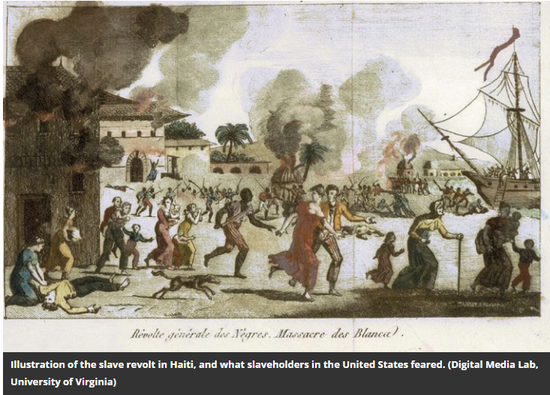 In the earliest years of the nation, the United States encountered its first refugee “crisis.” The ways in which the country responded has echoes in the individual, community and governmental responses to refugees and migrants today. Both great generosity and hypocrisy were in evidence, as well as fear of others and the welcoming of strangers. Nicholas Foreman wrote about this fascinating episode of US history for the Smithsonian, published in January 5, 2016. “Between 1791 and 1810, more than 25,000 refugees arrived on American shores from the French colony of Saint-Domingue, the modern-day nation of Haiti. Their homes and plantations, which were the engine behind the world’s most profitable colony in 1790, had been consumed by a bloody conflict that began as an appeal for racial equality, and ended in what historian David Geggus has called “the largest and sole fully successful [slave revolt] there has ever been." (To read the full article, click here.)  The Hebrew Immigrant Aid Society (HIAS) offers the following definitions of refugee, asylum seeker, internally displaced person and migrant. "Refugee: A refugee is a person who has been forced to flee their home country due to persecution because of their race, religion, nationality, political opinion or membership in a particular social group (e.g., members of the LGBTQ community). The persecution a refugee experiences may include harassment, threats, abduction or torture. A refugee is often afforded some sort of legal protection, either by their host country’s government, the United Nations High Commissioner for Refugees (UNHCR) or both. In the United States, refugees are hand-selected by the U.S. government and are screened in advance. They are subject to background checks and security screenings by multiple U.S. agencies. Only after everything is approved are they brought to the U.S. to reside permanently. Asylum seeker: An asylum seeker is a person who has fled persecution in their home country and is seeking safe haven in a different country, but has not yet received any legal recognition or status. In several countries, including the U.S., asylum seekers are sometimes detained while waiting for their case to be heard. Internally displaced person: An internally displaced person, or IDP, is a person who fled their home but has not crossed an international border to find sanctuary. Even if they fled for reasons similar to those driving refugees (armed conflict, generalized violence, human rights violations), IDPs legally remain under the protection of their own government – even though that government might be the cause of their flight. Migrant: A migrant is a person who chooses to move from their home for any variety of reasons, but not necessarily because of a direct threat of persecution or death. Migrant is an umbrella category that can include refugees but can also include people moving to improve their lives by finding work or education, those seeking family reunion and others." It is interesting to consider whether and how these concepts might apply to our interpretation of US colonial history. The National Park Service's "Historic Jamestowne" exhibit compares and contrasts Jamestown and Plymouth along several dimensions, including "Reasons for the colonies": "Economic motives prompted colonization in Virginia. The Virginia Company of London, organized in 1606, sponsored the Virginia Colony. Organizers of the company wanted to expand English trade and obtain a wider market for English manufactured goods. They naturally hoped for financial profit from their investment in shares of company stock. Freedom from religious persecution motivated the Pilgrims to leave England and settle in Holland, where there was more religious freedom. However, after a number of years the Pilgrims felt that their children were being corrupted by the liberal Dutch lifestyle and were losing their English heritage. News of the English Colony in Virginia motivated them to leave Holland and settle in the New World." Were Jamestown's colonizers migrants? and Plymouth's refugees? |
Details
Author30 Days of Posts to Educate and Inspire ArchivesCategories |
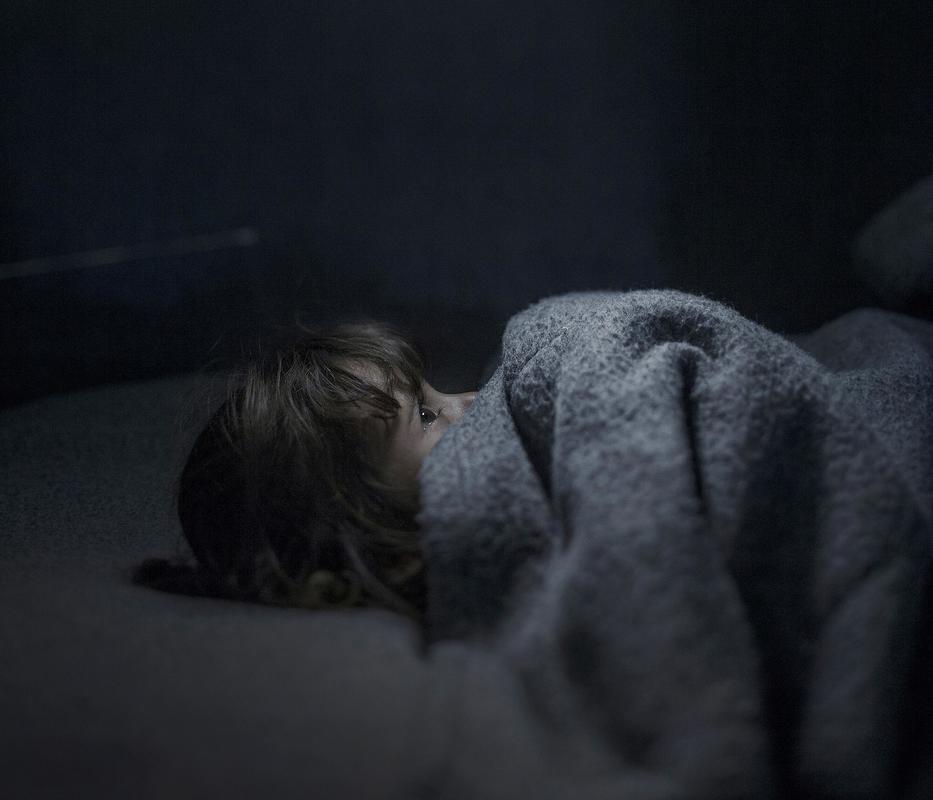
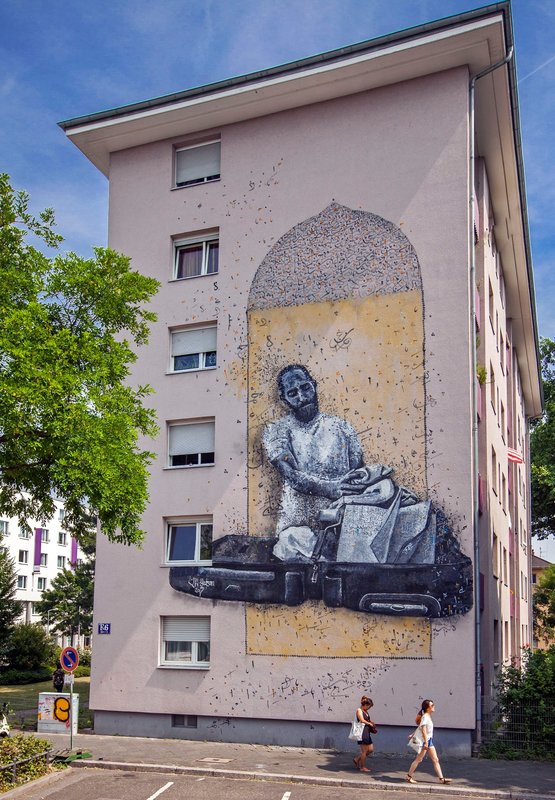
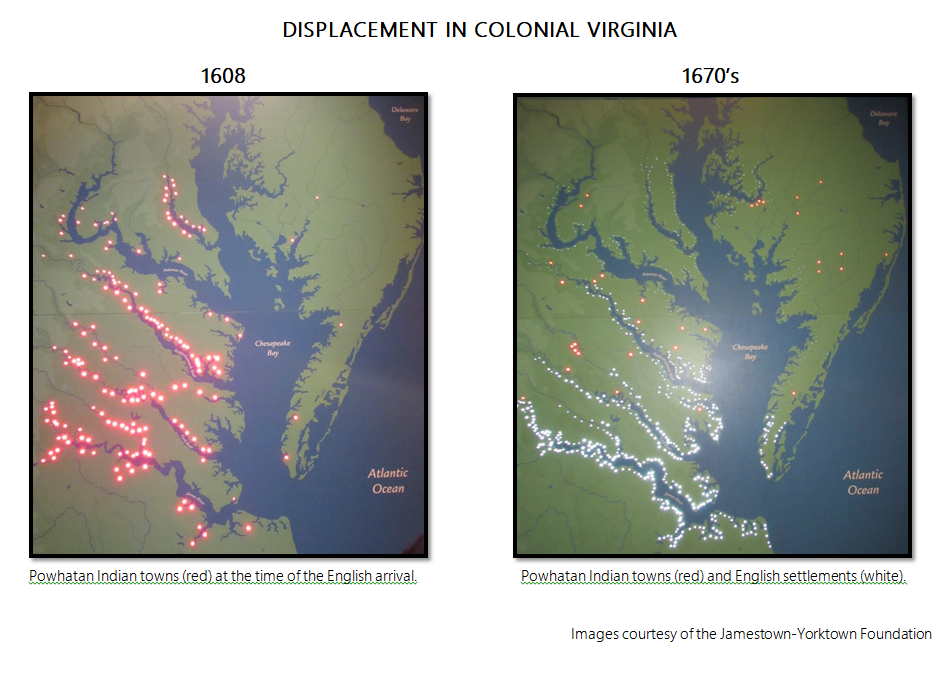
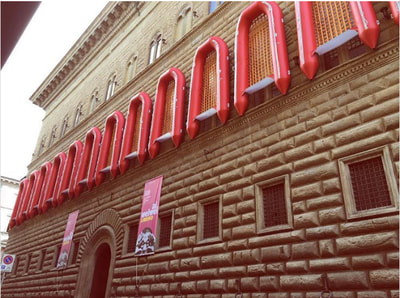


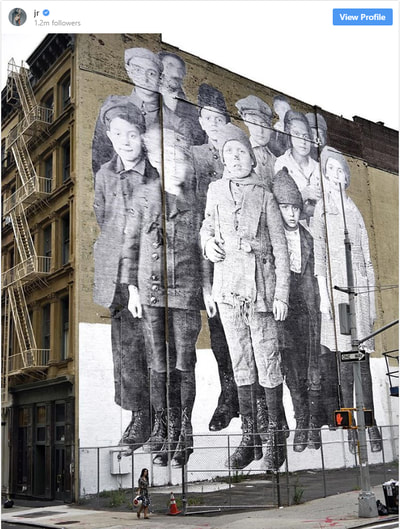
 RSS Feed
RSS Feed